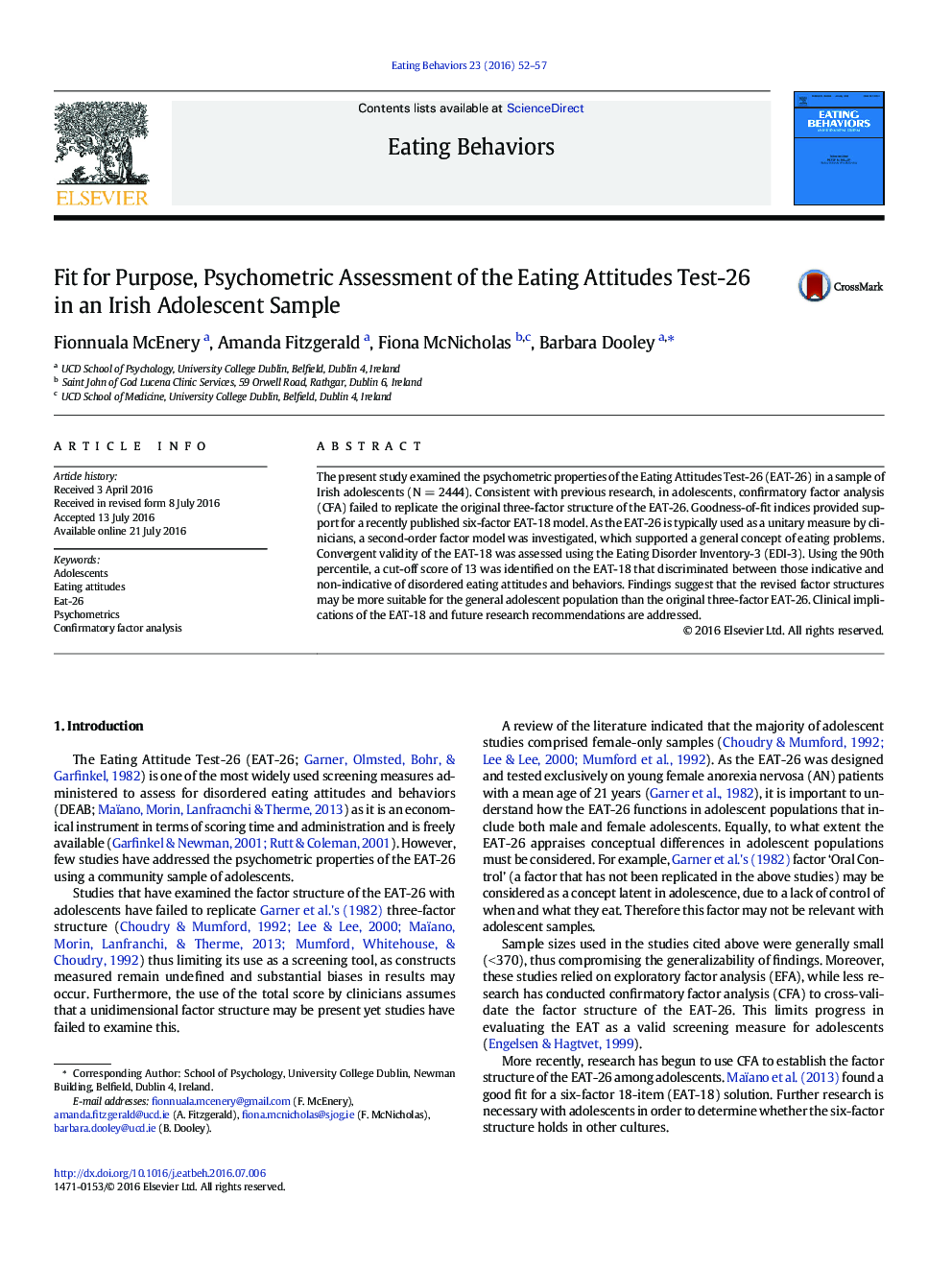| Article ID | Journal | Published Year | Pages | File Type |
|---|---|---|---|---|
| 906173 | Eating Behaviors | 2016 | 6 Pages |
Abstract
The present study examined the psychometric properties of the Eating Attitudes Test-26 (EAT-26) in a sample of Irish adolescents (NÂ =Â 2444). Consistent with previous research, in adolescents, confirmatory factor analysis (CFA) failed to replicate the original three-factor structure of the EAT-26. Goodness-of-fit indices provided support for a recently published six-factor EAT-18 model. As the EAT-26 is typically used as a unitary measure by clinicians, a second-order factor model was investigated, which supported a general concept of eating problems. Convergent validity of the EAT-18 was assessed using the Eating Disorder Inventory-3 (EDI-3). Using the 90th percentile, a cut-off score of 13 was identified on the EAT-18 that discriminated between those indicative and non-indicative of disordered eating attitudes and behaviors. Findings suggest that the revised factor structures may be more suitable for the general adolescent population than the original three-factor EAT-26. Clinical implications of the EAT-18 and future research recommendations are addressed.
Related Topics
Life Sciences
Neuroscience
Behavioral Neuroscience
Authors
Fionnuala McEnery, Amanda Fitzgerald, Fiona McNicholas, Barbara Dooley,
